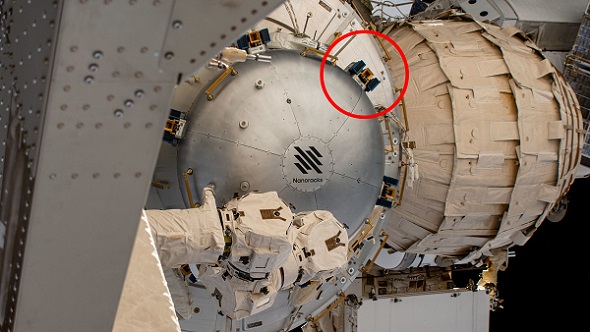An experiment launching to the International Space Station later this year could provide the building blocks for a future global quantum network. Called the Space Entanglement and Annealing Quantum Experiment (SEAQUE), it involves a milk-carton-size device that will test two communications technologies in space.
Space-based nodes that receive and transmit quantum data from the ground via free-space optical communications will be a key part of the infrastructure required for quantum computers and sensors to communicate with one another. SEAQUE is designed to prove the viability of technologies that may enable orbiting nodes to securely connect quantum transmitters and receivers over great distances.
To do so, the nodes will need to produce and detect pairs of entangled photons. Eventually, transmitting such photons to quantum computers on the ground could enable quantum cloud computing.

SEAQUE will be hosted on the International Space Station by the Nanoracks Bishop Airlock. The brackets attached to the side of the airlock are for external payloads (red circle). The technology demonstration will be installed at one of these sites. Courtesy of NASA.
To accomplish this, SEAQUE relies on an integrated source of entangled photons using a waveguide. The microscopic structure acts like an expressway for photons, directing their transmission with little loss of their quantum state.
“SEAQUE will demonstrate a new and never-before-flown entanglement source based on integrated optics,” said Paul Kwiat, the project’s principal investigator at the University of Illinois Urbana-Champaign. “Such a source is inherently much smaller, more robust, and more efficient at producing photon pairs than the bulk optic entanglement sources used in previous space experiments.”
Once attached to the space station’s exterior, SEAQUE will also test a technique to help space-based nodes self-heal from radiation damage, which is a continual challenge of maintaining delicate instruments in space. As radiation from space comes into contact with the nodes’ detectors, defects are introduced over time. These defects can manifest as “dark counts” in a detector’s output, creating noise that will eventually overwhelm any quantum signal from the ground. Left unchecked, space radiation would ultimately degrade such detectors to a point where they would need to be replaced regularly, thereby impeding the viability of a global quantum communications network.
To remedy this problem, SEAQUE will use a bright laser to periodically repair radiation-induced damage affecting the detector’s array count.
“In tests on the ground, we found that this technique causes the defects in the lattice to ‘bubble away’ – a process known as annealing – thereby reducing detector noise and potentially prolonging the life of in-space quantum nodes, facilitating a robust global network,” Kwiat said.
SEAQUE will be hosted on the space station by the Bishop Airlock, which is owned and operated by Nanoracks. Nanoracks will also provide mission operations services and coordinate the launch, which is expected to take place in August. The technology demonstration is funded by NASA’s Biological and Physical Sciences Division within the agency’s Science Mission Directorate.